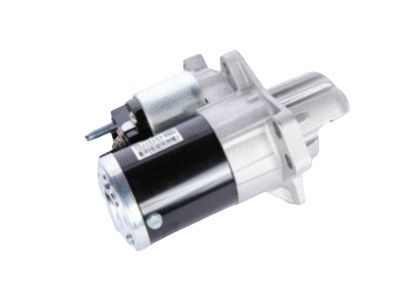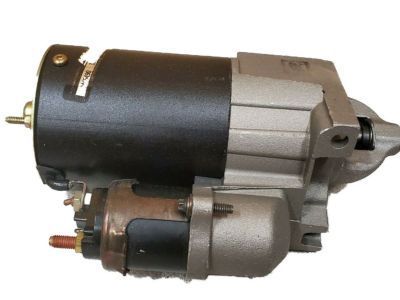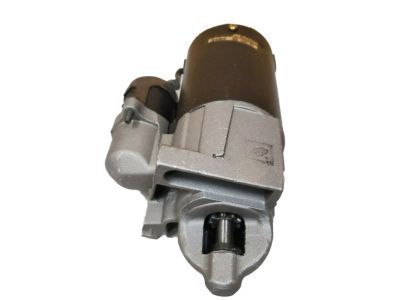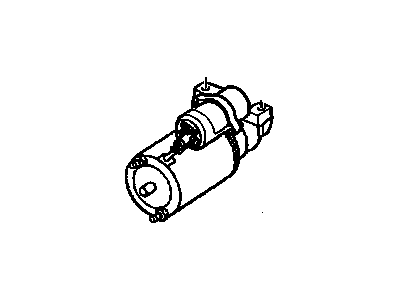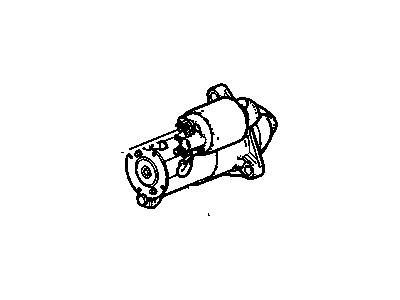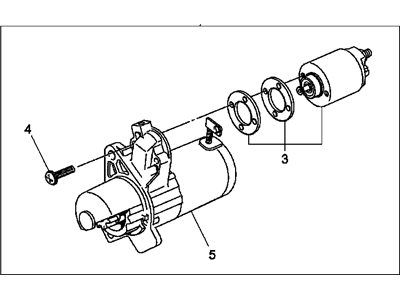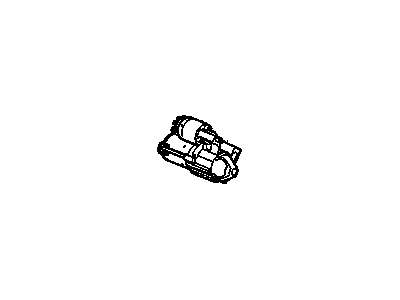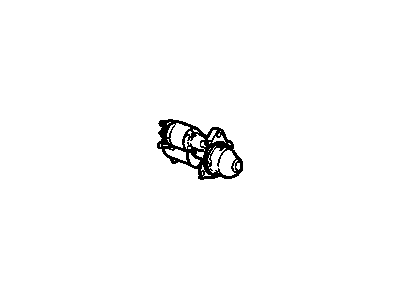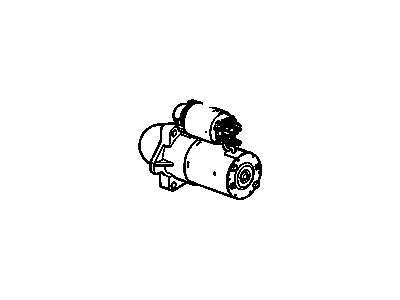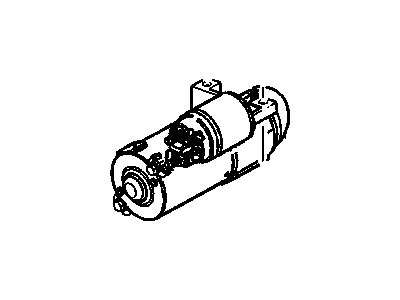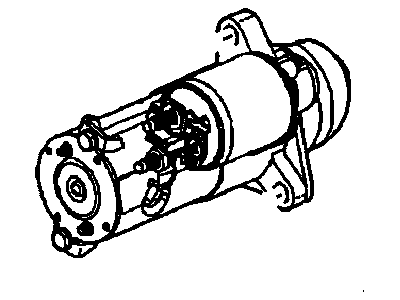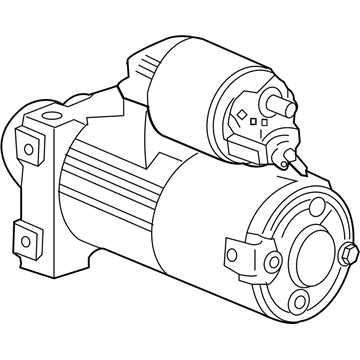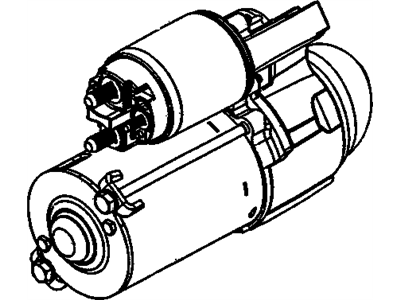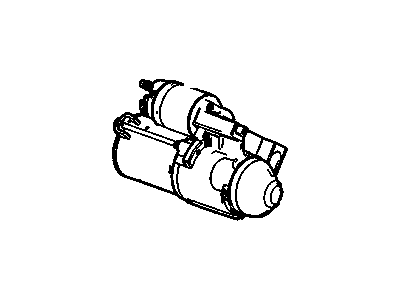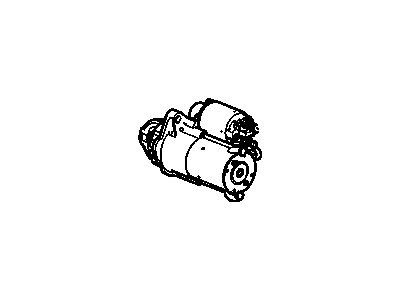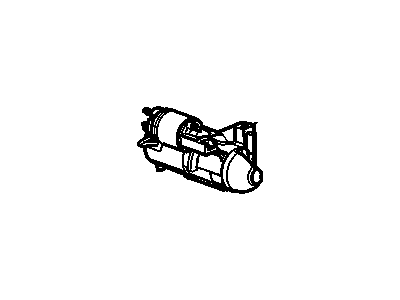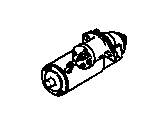
My Garage
My Account
Cart
Genuine Pontiac Starter
Starter Ignition- Select Vehicle by Model
- Select Vehicle by VIN
Select Vehicle by Model
orMake
Model
Year
Select Vehicle by VIN
For the most accurate results, select vehicle by your VIN (Vehicle Identification Number).
64 Starters found
Pontiac Starter Asm
Part Number: 12645298$212.92 MSRP: $401.72You Save: $188.80 (47%)Ships in 1-2 Business DaysProduct Specifications- Other Name: STARTER, Starter Motor; Starter
- Replaces: 12598756, 12601721
Pontiac Starter, (Remanufacture)
Part Number: 10465490$86.89 MSRP: $263.51You Save: $176.62 (68%)Ships in 1-2 Business DaysProduct Specifications- Other Name: STARTER, Starter Motor; Starter
- Replaces: 10455053, 10465098
Pontiac Starter Asm
Part Number: 12609317$217.22 MSRP: $433.03You Save: $215.81 (50%)Ships in 1-2 Business DaysProduct Specifications- Other Name: STARTER, Starter Motor; Starter
- Replaces: 89060407
Pontiac Starter Asm
Part Number: 12617229$157.94 MSRP: $305.71You Save: $147.77 (49%)Ships in 1-2 Business DaysProduct Specifications- Other Name: STARTER, Starter Motor; Starter
- Replaced by: 19418859
Pontiac Starter Asm, (Remanufacture) (Pg260D)
Part Number: 89017845$311.93 MSRP: $688.90You Save: $376.97 (55%)Ships in 1-2 Business DaysProduct Specifications- Other Name: STARTER, Starter Motor; Starter
Pontiac Starter, (Remanufacture)
Part Number: 10465385$337.88 MSRP: $670.35You Save: $332.47 (50%)Ships in 1-2 Business DaysProduct Specifications- Other Name: STARTER, Starter Motor; Starter
Pontiac Starter Asm, (Remanufacture) (Pg260D)
Part Number: 89017754$288.81 MSRP: $543.15You Save: $254.34 (47%)Ships in 1-2 Business DaysProduct Specifications- Other Name: STARTER, Starter Motor; Starter
Pontiac Starter Asm, (Remanufacture) (Pg260D)
Part Number: 89017755$306.78 MSRP: $609.74You Save: $302.96 (50%)Ships in 1-2 Business DaysProduct Specifications- Other Name: STARTER, Starter Motor; Starter
Pontiac Starter (Remanufacture)
Part Number: 89017760$232.17 MSRP: $512.18You Save: $280.01 (55%)Ships in 1-2 Business DaysProduct Specifications- Other Name: STARTER, Starter Motor; Starter
Pontiac Starter, (Remanufacture)
Part Number: 10465558$150.72 MSRP: $456.99You Save: $306.27 (68%)Ships in 1-2 Business DaysProduct Specifications- Other Name: STARTER, Starter Motor; Starter
Pontiac Starter Asm
Part Number: 25187957$156.61 MSRP: $477.79You Save: $321.18 (68%)Ships in 1-2 Business DaysProduct Specifications- Other Name: STARTER, Starter Motor; Starter
- Replaces: 25186107, 96469963, 25182244, 96843578, 96952006, 96550792
Pontiac Starter Asm, (Remanufacture Pg260D)
Part Number: 89017714$254.20 MSRP: $504.88You Save: $250.68 (50%)Ships in 1-2 Business DaysProduct Specifications- Other Name: STARTER, Starter Motor; Starter
- Replaces: 10465519, 10465542
Pontiac Starter Asm, (Remanufacture) (Pg260D)
Part Number: 89017756$292.61 MSRP: $550.31You Save: $257.70 (47%)Ships in 1-2 Business DaysProduct Specifications- Other Name: STARTER, Starter Motor; Starter
- Replaces: 10465551, 89017443, 89017523
Pontiac STARTER
Part Number: 19418865$192.27 MSRP: $383.32You Save: $191.05 (50%)Ships in 1-2 Business DaysProduct Specifications- Replaces: 92202964
Pontiac Motor Asm,Start (Remanufacture)
Part Number: 10465459$112.35 MSRP: $339.90You Save: $227.55 (67%)Ships in 1-2 Business DaysProduct Specifications- Other Name: STARTER, Starter Motor; Starter
- Replaces: 10465384
Pontiac Starter Asm, (Remanufacture) (Pg260D)
Part Number: 89017715$306.88 MSRP: $609.93You Save: $303.05 (50%)Ships in 1-2 Business DaysProduct Specifications- Other Name: STARTER, Starter Motor; Starter
- Replaces: 89017452
Pontiac Starter Asm, (Remanufacture) (Pg260G)
Part Number: 89017716$219.81 MSRP: $412.96You Save: $193.15 (47%)Ships in 1-2 Business DaysProduct Specifications- Other Name: STARTER, Starter Motor; Starter
- Replaces: 89017468
- Product Specifications
- Replaces: 92204529
Pontiac Starter Asm, (Remanufacture) (Pg260D)
Part Number: 89018113$163.64 MSRP: $496.42You Save: $332.78 (68%)Ships in 1-2 Business DaysProduct Specifications- Other Name: STARTER, Starter Motor; Starter
- Product Specifications
- Other Name: STARTER, Starter Motor; Starter
| Page 1 of 4 |Next >
1-20 of 64 Results
Pontiac Starter
If you're searching for OEM Pontiac Starters, look no further. Our website boasts an extensive inventory of genuine Pontiac Starters, all available at competitive prices online. Every part we offer comes with a manufacturer's warranty. In addition, we provide a straightforward return policy and rapid delivery services, making your shopping experience a breeze.
Pontiac Starter Parts Questions & Experts Answers
- Q: How to remove the Starter on Pontiac Firebird?A:To disconnect the cable from the negative battery terminal, first disable the anti-theft feature if your model has a Delco Loe II audio system. Then, raise the vehicle and secure it on jackstands. Remove the brackets supporting the starter and the two starter motor to engine bolts. Allow the starter to drop down enough to remove the nuts attaching the wires to the starter solenoid and battery cable, supporting the starter while removing the wires. Separate the starter from the engine and reinstall any removed shims during the installation process.
- Q: How to diagnose starter problems on Pontiac Fiero?A:Ensure that the battery is fully charged before diagnosing starter problems. In case the switch is operated and the starter does not turn, make sure the shift lever is in Neutral or Park (automatic transmission) or that you depress the clutch pedal (manual transmission). Check that your battery is charged and all cables are secure. This could mean a slipping overrunning clutch in the starter, which can call for removal and disassembly of the starter. It could be with your battery, main solenoid contacts or even the starter itself if solenoid clicks but there is no operation on the starter. It may be defective if you can't hear solenoid plunger when switch is actuated, this could be due to defective solenoid or solenoid circuit. Attach a jumper lead between (+) terminal of battery and S terminal on solenoid to test solenoid condition. If starter works, then there's nothing wrong with it; instead; problem lies either in wiring, neutral start switch or ignition switch. If still no operation take out the starter/solenoid assembly for further testing and repair. Make sure your battery is charged and all terminal connections are tight if Starter cranks engine slowly at low speed. Slow starting may result from partial seizure of engine or presence of oil with wrong viscosity in it. Allow the engine to reach its normal operating temperature before testing the starter, then disconnect coil wire from distributor cap and ground it on engine block after which take voltmeter readings as follows: Connect positive lead of volt meter to S terminal on solenoid and negative one to ground; have someone turn ignition switch on while you keep an eye out for any change in voltage readings on voltmeter; do not forget that 9-volts or more reading means faulty Starter provided normal cranking speed persists while less than 9-volts reading suggests slow cranking speed caused by burned solenoid contacts.
Related Pontiac Parts
Browse by Model
6000 Starter Aztek Starter Bonneville Starter Fiero Starter Firebird Starter G3 Starter G5 Starter G6 Starter G8 Starter GTO Starter Grand Am Starter Grand Prix Starter J2000 Starter LeMans Starter Montana Starter Parisienne Starter Phoenix Starter Pursuit Starter Safari Starter Solstice Starter Sunbird Starter Sunfire Starter Sunrunner Starter Torrent Starter Trans Sport Starter Vibe Starter
